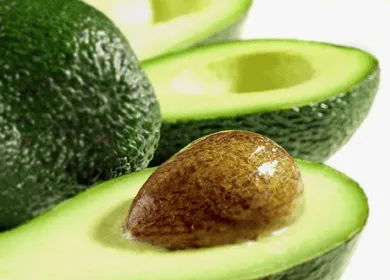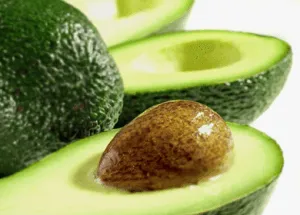
- Share on Facebook3
- Share on Pinterest
- Share on Twitter
The color green denotes life, signifying growth, renewal and health. The word itself brings to mind phrases like green living, green thumb, green with envy. But none is heard (or dreaded) as much as, “Eat your greens.” Foods of every color are abundant in nutrients, but calorie-for-calorie, green foods, whether leafy greens, green vegetables or fruit, seaweed, even ‘green’ supplements, are nutritional powerhouses.
 Rich in minerals, namely magnesium, potassium and iron, greens also provide B vitamins, folate in particular, plus vitamins K, C, and E. A cup of most greens provides several times the minimum recommendation for vitamin K, needed for the production of osteocalcin, a protein essential for bone health.
Rich in minerals, namely magnesium, potassium and iron, greens also provide B vitamins, folate in particular, plus vitamins K, C, and E. A cup of most greens provides several times the minimum recommendation for vitamin K, needed for the production of osteocalcin, a protein essential for bone health.
Greens come packaged with layers of fiber. As a result, they’re extremely low in calories and carbohydrate, and have minimal impact on blood glucose.
Green vegetables and fruit contain a host of antioxidants. Beta-carotene, lutein, and zeaxanthin protect our cells from damage and our eyes from age-related problems, such as macular degeneration. Cabbage, broccoli, and Brussels sprouts are known for their indoles and isothiocyanates, protecting against colon and other cancers, and sulforaphane, shown to protect against breast and skin cancer.
Here’s a nutritional profiles for some of our favorite green vegetables:
SPINACH: Key nutrients are folate (also known as folic acid), potassium and magnesium. Just a half-cup of cooked spinach provides 50 percent of the recommended daily amount of folate, one of the B vitamins. Folate is needed for a healthy nervous system, to prevent neural tube defects, and for the production of healthy blood cells. Magnesium, nicknamed the “anti-stress mineral,” is vital for a healthy heart and for the proper use of calcium.
DANDELION: Often overlooked, the humble dandelion wins one of the top spots for nutritional value amongst leafy green vegetables. With more than double the vitamin A of spinach and turnip greens, it’s also highest in thiamin and riboflavin, two important members of the B vitamin family. Vitamin A promotes the health of the lungs, eyes and skin.
KALE: A great source of vitamin C, 100g of kale provides 120mg of the powerful antioxidant. To compare, the same amount of spinach has only 28mg of vitamin C. Calcium is another one of kale’s many virtues. Steamed kale effectively reduces cholesterol, even more so than raw kale.
BOK CHOY: Rich in potassium, a mineral necessary for healthy nerve and muscle functioning, bok choy also has lots of vitamin A. It keeps skin and eyes healthy and helps prevent cancer.
AVOCADO: One of the most nutritious fruits, an avocado contains twice the potassium of a banana, 10g of fiber, and is packed with vitamins E, K and B6.
BROCCOLI: Another highly nutritious vegetable containing over 20 vitamins and minerals. One cup of raw broccoli is bursting with vitamins A and C. In addition to sulforaphane, which aids in increasing the levels of enzymes that block cancer, its indole-3 carbinol content helps balance hormones, thus providing defense against hormone-related cancers, including breast and prostate cancer, as well as PCOS, fibroids, and regulating the menstrual cycle.
ASPARAGUS: This crispy vegetable is packed with beneficial nutrients, including vitamins K, C, A, and folate. Its phytochemicals produce an anti-inflammatory effect that may benefit arthritis pain, and it helps stimulate milk production in nursing mothers.
Other nutritious green vegetables and fruits include collard greens, cabbage, green bell peppers, zucchini, celery, artichoke, and green beans.
Eat at least one green vegetable with each meal, and aim for five servings a day.
– Lisa Tsakos
Lisa Tsakos is a Registered Nutritionist and a regular contributor to NaturallySavvy.com, a website that educates people on the benefits of living a natural, organic and green lifestyle. For more information and to sign up for their newsletter, visit www.NaturallySavvy.com
(c) 2011, NATURALLY SAVVY DISTRIBUTED BY TRIBUNE MEDIA SERVICES, INC.
- Share on Facebook3
- Share on Pinterest
- Share on Twitter

